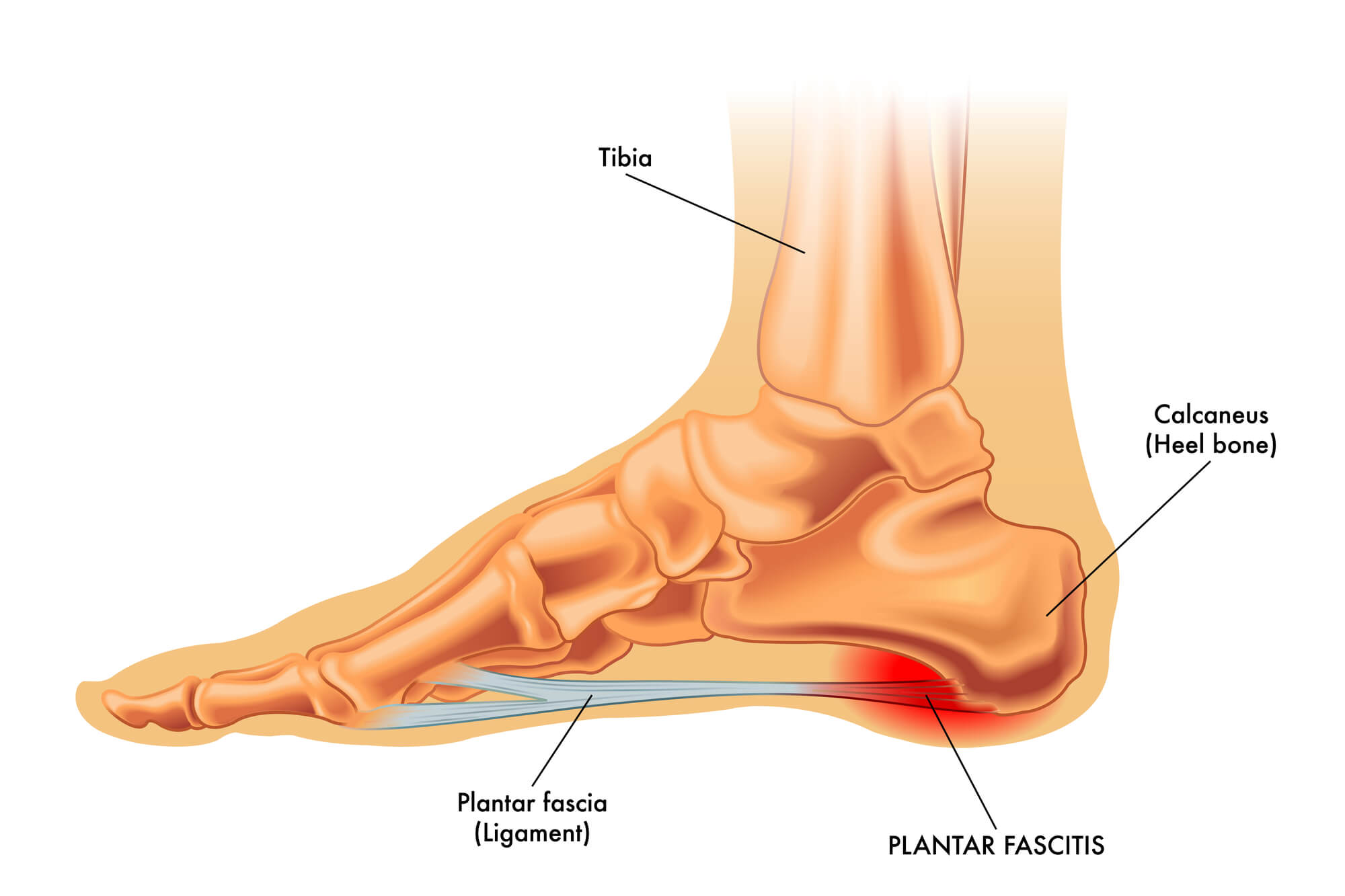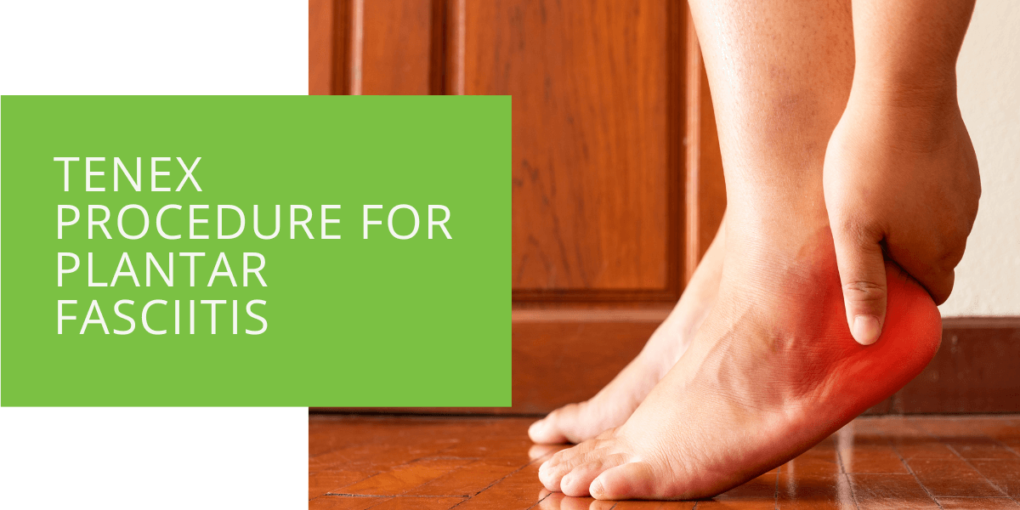Tenex Procedure for Plantar Fasciitis
If you suffer from plantar fasciitis, you know the constant pain and discomfort that can come with it. This condition, which affects the connective tissue running along the bottom of the foot, can make even the simplest of tasks difficult and unpleasant. While several traditional treatment options are available, such as stretching and strengthening exercises, orthotic inserts and shoes, and corticosteroid injections, some people may be looking for a more non-invasive option. That's where the Tenex procedure comes in.
What is Plantar Fasciitis?
Before diving into the Tenex procedure, it's important to understand exactly what plantar fasciitis is and what causes it. Plantar fasciitis is a common condition that causes pain and inflammation in the connective tissue, or plantar fascia, running along the bottom of the foot. This tissue connects the heel bone to the toes and helps support the foot's arch.
Symptoms of Plantar Fasciitis
The most common symptom of plantar fasciitis is heel pain, which is often worse in the morning or after periods of inactivity. Other symptoms may include pain along the bottom of the foot, difficulty walking or standing for long periods, and swelling in the heel or arch of the foot.

Causes of Plantar Fasciitis
Several factors can contribute to the development of plantar fasciitis. These include:
- Overuse or strain on the feet, such as from running, walking or standing for long periods
- High arches or flat feet
- Tight calf muscles or Achilles tendon
- Being overweight
- Wearing shoes that don't provide enough support or cushioning
Traditional Treatments for Plantar Fasciitis
If you're experiencing the symptoms of plantar fasciitis, your first step should be to visit a podiatrist or foot specialist. They will be able to diagnose your condition and recommend a treatment plan. Some common treatment options for plantar fasciitis include:
- Stretching and strengthening exercises: Stretching and strengthening the foot and lower leg muscles can help alleviate pain and improve mobility. Your podiatrist may recommend specific exercises to try at home.
- Orthotic inserts and shoes: Wearing shoes with proper arch support and cushioning can help take the strain off the plantar fascia and reduce pain. Your podiatrist may recommend custom orthotic inserts or suggest certain types of shoes to try.
- Corticosteroid injections: In some cases, a corticosteroid injection may be used to reduce inflammation and pain. These injections are usually given by a podiatrist or foot specialist.
- Surgery: In severe cases of plantar fasciitis, surgery may be necessary to release the plantar fascia and alleviate pain. This is typically only recommended if other treatments have not been successful.

Introduction to the Tenex Procedure
The Tenex procedure may be worth considering if you're looking for a less invasive treatment option for plantar fasciitis. The procedure is a minimally invasive technique that uses ultrasonic energy to remove damaged tissue from the plantar fascia. This can help reduce pain and improve mobility.
What is the Tenex Procedure?
The Tenex procedure is a minimally invasive technique that uses ultrasonic energy to remove damaged tissue from the plantar fascia. It is performed by a podiatrist or foot specialist and typically takes less than an hour to complete.
How is the Tenex Procedure Performed?
During the Tenex procedure, the podiatrist will numb the area and make a small incision in the skin. They will then insert a special instrument called a Tenex probe, which uses ultrasonic energy to break up and remove the damaged tissue. The procedure is typically done on an outpatient basis and does not require a hospital stay.
Benefits of the Tenex Procedure
There are several benefits to the Tenex procedure for treating plantar fasciitis:
- Non-Invasive and Minimally Invasive: The procedure is much less invasive than surgery, which can be a major advantage for those who are hesitant to undergo a more invasive procedure.
- Quick Recovery Time: Because the procedure is minimally invasive, recovery time is typically much shorter than it would be after surgery. Most people are able to return to their normal activities within a few days.
- High Success Rate: Studies have shown that the procedure has a high success rate for relieving pain and improving mobility in people with plantar fasciitis.

Risks and Considerations of the Tenex Procedure
As with any medical procedure, the Tenex procedure has potential risks and complications. Some possible risks include infection, bleeding, and nerve damage. It's important to discuss these risks with your podiatrist and weigh them against the potential benefits of the procedure.
Conclusion
The Tenex procedure may be a good option for those with plantar fasciitis looking for a less invasive treatment option. However, it's important to discuss all of your treatment options with a podiatrist or foot specialist to determine the best course of action for your situation.
FAQ
What is the Tenex procedure?
The Tenex procedure is a minimally invasive technique that uses ultrasonic energy to remove damaged tissue from the plantar fascia, which is the connective tissue running along the bottom of the foot. This can help reduce pain and improve mobility in people with plantar fasciitis.
How is the Tenex procedure performed?
The Tenex procedure is typically performed by a podiatrist or foot specialist. During the procedure, the area is numbed and a small incision is made in the skin. The podiatrist will then insert a special instrument called a Tenex probe, which uses ultrasonic energy to break up and remove the damaged tissue. The procedure is typically done on an outpatient basis and does not require a hospital stay.
Is the Tenex procedure safe?
The Tenex procedure is generally considered safe, but as with any medical procedure, there are potential risks and complications. These may include infection, bleeding, and nerve damage. It's important to discuss these risks with your podiatrist before deciding whether the Tenex procedure is right for you.
How long does the Tenex procedure take?
The Tenex procedure typically takes less than an hour to complete.
Is the Tenex procedure painful?
The area is numbed before the procedure, so most people do not experience significant pain during the Tenex procedure. However, you may experience some discomfort during the recovery period. Your podiatrist can recommend pain management options to help alleviate any discomfort.
How long is the recovery time after the Tenex procedure?
Recovery time after the Tenex procedure is typically shorter than it is after surgery, as the procedure is less invasive. Most people are able to return to their normal activities within a few days.
Is the Tenex procedure covered by insurance?
Insurance coverage for the Tenex procedure may vary. It's important to check with your insurance provider to see if the procedure is covered under your plan.
Can the Tenex procedure be used to treat conditions other than plantar fasciitis?
The Tenex procedure is primarily used to treat plantar fasciitis, but it may also be used to treat other conditions that cause pain and inflammation in the foot, such as tendonitis.
Does the Tenex procedure involve scar tissue?
The Tenex procedure involves making a small incision in the skin, so there may be a scar after the procedure. However, the scar is usually small and fades over time.
Is anesthesia used during the Tenex procedure?
Yes, a local anesthesia is typically used during the Tenex procedure to numb the area. This helps to minimize discomfort during the procedure.
How long does the pain relief last after the Tenex procedure?
The pain relief from the Tenex procedure can vary from person to person. Some people may experience long-term relief, while others may need additional treatment or maintenance to manage their symptoms. It's important to follow your podiatrist's recommendations for ongoing care to help maintain the benefits of the Tenex procedure.

